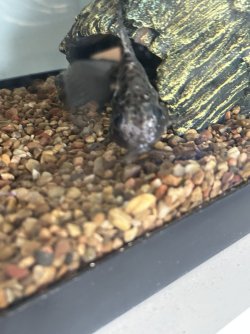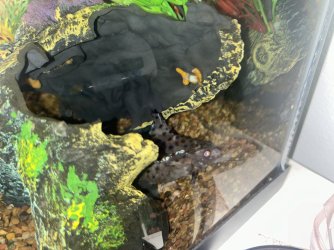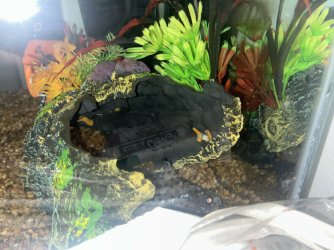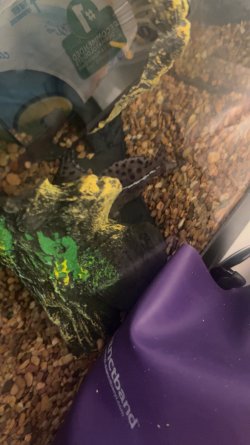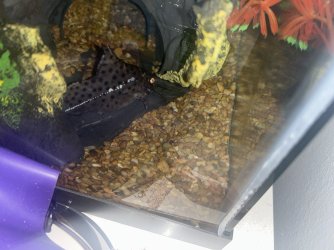You can change the water regularly and also change large amounts without it affecting the filter bacteria. The beneficial bacteria live on hard surfaces in dark areas (inside the filter). The harmful bacteria, protozoa and fungus live in the water. Big water changes dilute the harmful stuff but do not affect the good bacteria in the filter.
Make sure any new water is free of chlorine/ chloramine before it's added to the aquarium.
If it's just a dirty tank and poor water quality (low pH and high nitrate), then doing big daily water changes and cleaning the gunk out of the gravel will make a huge difference. You might still need to add something to reduce the risk of infection but the water changes will help with that too.
Salt can be used to reduce infection but try water changes and gravel cleaning and monitor the damaged fin.
If it goes white and fluffy, that is Saprolegnia fungus and salt can treat it.
If it goes red, that is bacteria and salt can usually treat it if it's a minor infection.
--------------------
SALT
You can add rock salt (often sold as aquarium salt), swimming pool salt, or any non iodised salt (sodium chloride) to the aquarium at the dose rate of 1 heaped tablespoon per 20 litres (5 gallons) of water. If there is no improvement after 48 hours you can double that dose rate so there is 2 heaped tablespoons of salt per 20 litres.
Keep the salt level like this for 1 to 2 weeks. If there's no improvement after 1 week with salt, post more pictures and look into getting a broad spectrum medication that treats bacteria and fungus.
The salt will not affect the beneficial filter bacteria, fish, plants, shrimp or snails.
After you use salt and the fish have recovered, you do a 10% water change each day for a week using only fresh water that has been dechlorinated. Then do a 20% water change each day for a week. Then you can do bigger water changes after that. This dilutes the salt out of the tank slowly so it doesn't harm the fish.
If you do water changes while using salt, you need to treat the new water with salt before adding it to the tank. This will keep the salt level stable in the tank and minimise stress on the fish.
When you first add salt, add the salt to a small bucket (2 litres/ half a gallon) of tank water and dissolve the salt. Then slowly pour the salt water into the tank near the filter outlet. Add the salt over a couple of minutes.

